#lubber grasshopper
Text
[VIDEO TAKEN: SEPTEMBER 15TH, 2023 | Video ID: A video of a black, yellow, white, and red lubber grasshopper on a piece of paper, wriggling its abdomen and opening and closing the dorsal and ventral valves of its ovipositor in a way that makes it look as if the back half of the animal is its own snapping creature /End IDs.]
Encountered this grasshopper and scooped it up with a letter! Which is about when I noticed it exhibiting this fascinating behavior! It's freaky but very interesting!
#I think that video ID is right? Lemme know#Romaleidae#lubber grasshopper#grasshoppers#Grasshopper#Orthoptera#insects#Insect#Bugs#Bug#Bugblr#Video#Videos#entomology#invertebrates#Inverts#Arthropods#Wasp House Sights
5K notes
·
View notes
Text

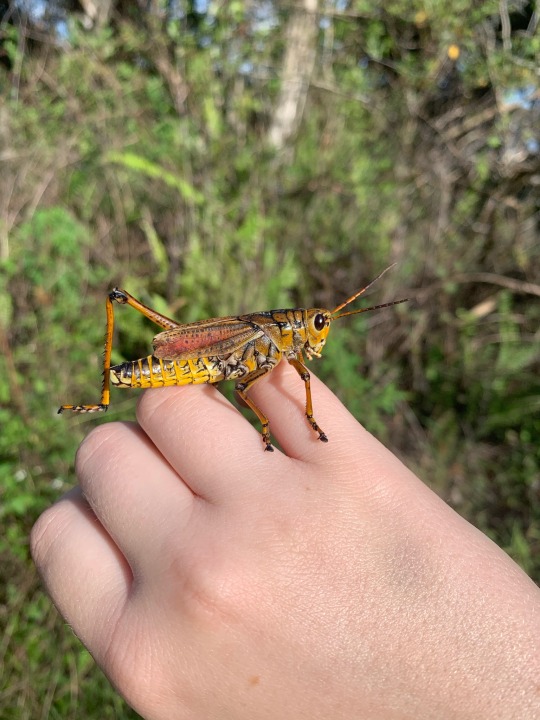

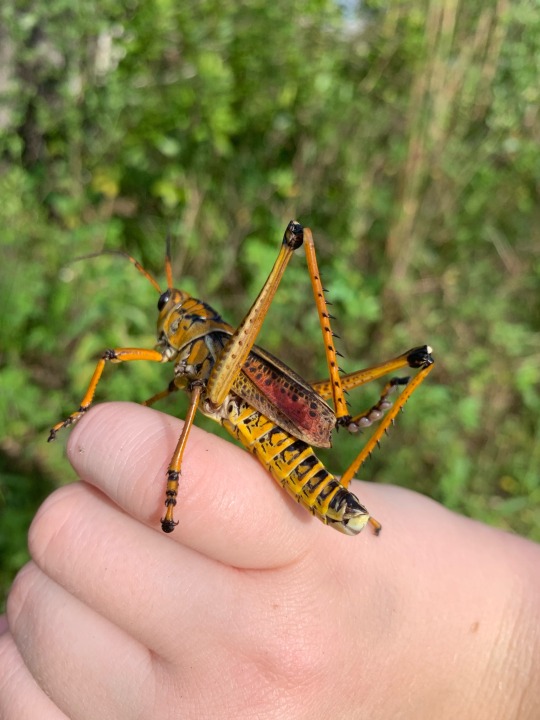
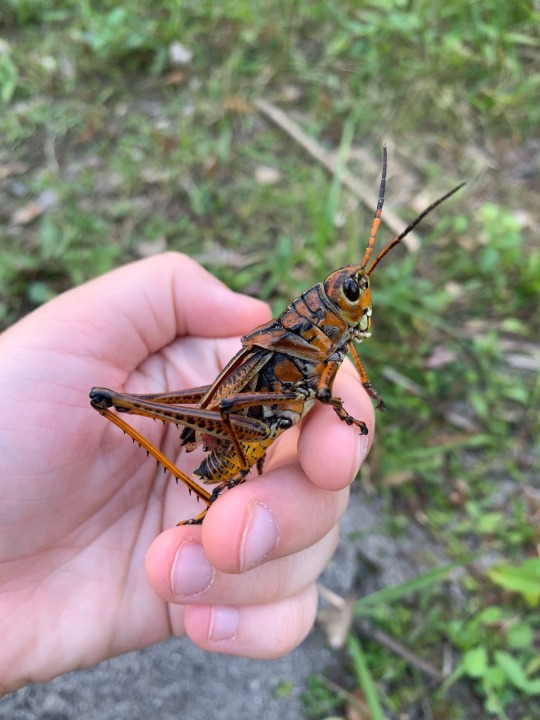
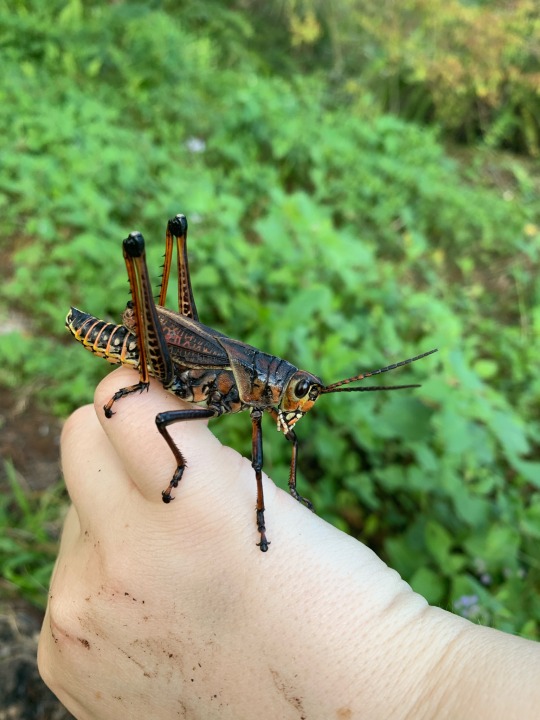


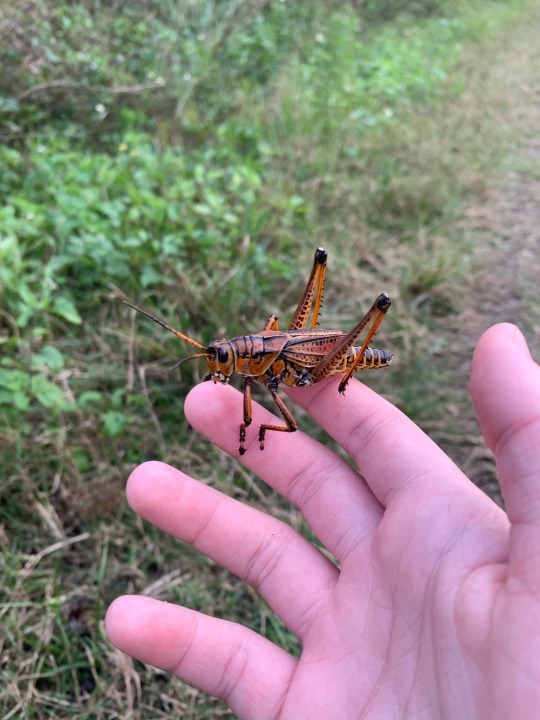
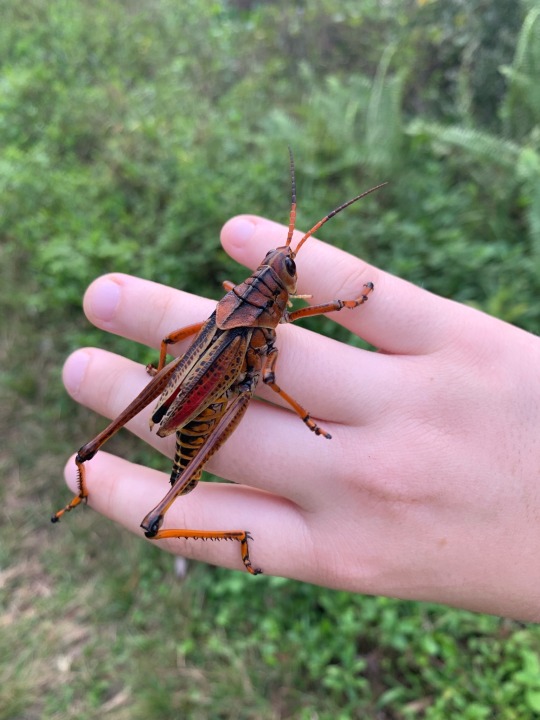
every single photo is an individual
from a trail I went on a couple days ago
#nature#nature photography#photography#pretty forest#grassland#grasslands#nature photos#nature pics#natural world#unedited photos#florida#bugs#insects#entomology#eastern lubber grasshopper#lubber grasshopper#grasshopper#arthropods
45 notes
·
View notes
Text

Reticulate Lubber Grasshopper (Taeniopoda reticulata), mating, family Romaleidae, La Selva Biological Station, Costa Rica
photograph by Hans Hillewaert
#grasshopper#romaleidae#lubber grasshopper#insect#entomology#taeniopoda#orthoptera#animals#nature#central america
49 notes
·
View notes
Text

Quick doodle of me with my lubber grasshoppers. I found them as they were emerging from the ground in hordes sometime in March, they're adults now and doing well on lettuce and leaf litter. They're so slow and clumsy and personable, one of my favorite species.
#eastern lubber grasshopper#grasshopper#clown girl#clownsona#insects#bugs#insect art#bug art#lubber grasshopper
42 notes
·
View notes
Text
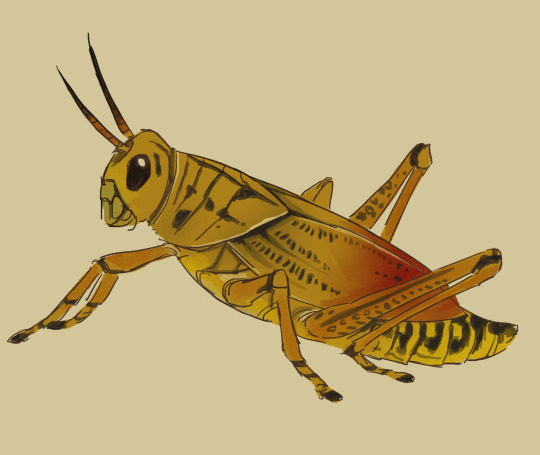

@fly-sky-high-09 lubber? i hardly know er
#traitor art#grasshopper#bugs#lubber grasshopper#i really didnt care for this at first but now that ive taken a break and looked at it again i do think its fine. i like it
26 notes
·
View notes
Text



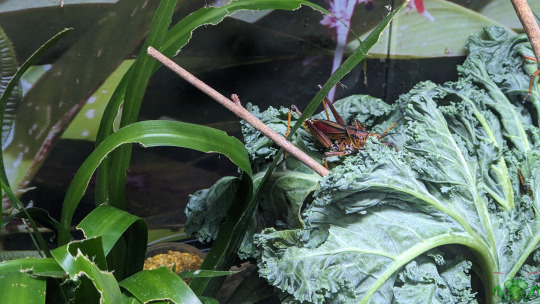




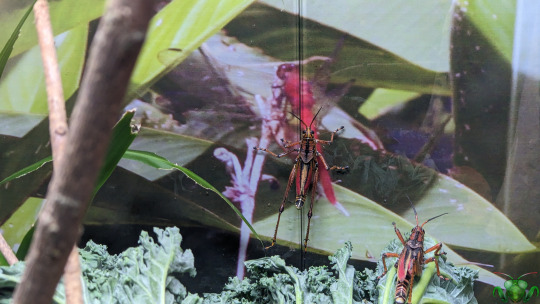

Eastern Lubber Grasshopper - Romalea microptera
Welcome to Part 2 of insects photographed at the Toronto zoo. For today, we're sticking to insects found in North America before journeying with more tropical specimens. While you're not likely to find these Grasshoppers in Ontario, they can be found in the southeastern United States. There are other Grasshoppers that are similar in appearance, but they are found in the west. And speaking of appearance, they're much larger compared to any other specie I've found previously in Ontario, dwarfing even the Carolina Locust! Though not quite tropical, their regular environment is far warmer than Ontario, and likely supports plenty of herbaceous food which facilitates a larger size. As such, their terrarium must be well conceived to support these individuals at a natural size (they're certainly well supplied with vegetable food). Secondly, their coloration is far more striking compared to the green, camouflaging colors sported by Ontario Melanoplus Grasshoppers. Their red/orange colors are quite pretty but also distinctive; juveniles (not shown here) meanwhile sport deep black coloration, adorned with yellow borders and stripes. The only section that remains consistent while molting with respect to color are the Grasshoppers' abdomens. Looking at the bright colors of their bodies, you may also be drawn to their species namesake: microptera, meaning "reduced-wing". Yes, despite their large size, their wings are small, rendering this specie flightless.
Furthermore, it's common name "Lubber Grasshopper" (family Romaleidae) may give the impression that this Orthopteran is slow-witted, lumbering creature. While there is a bit of truth to that, not all Grasshoppers within Romaleidae are graceless, but all are quite powerful (at least in terms of size). The Eastern Lubber is a bit slow to move, however. I observed these individuals for around 10-15 minutes, and the only insects to move substantially were the ones seen in images 4 and 6 (before and after) who moved to a better lunch time spot and the individual climbing the wall in Pictures 8 and 10! While they may move slowly, they can afford to, and its far more than bounding away using their propulsive hindlegs. Those bright colors are in fact warning coloration, advertising their unpalatable taste to any large predator foolish enough to try and grab a bite! The second warning appear in the form of wing flashes and even hissing! Finally, if all else failing and capture is likely, they can release a chemical defense of noxious foamy fluid (synthesized from the toxic plants they eat in the wild) from their spiracles if captured! I recommend this open source paper by Whitman D. W. et al for further exploration into the defenses of this insect as well as for their suggestions as to why a larger body sizes could be favored in this specie of Grasshopper. To summarize: their unpalatable bodies keep away larger predators, while their large size makes predation by smaller insect predator difficult.
These insects belong to the Toronto Zoo, so they've been marked with the Mantis icon. Pictures were taken August 27, 2023 at the Toronto Zoo with a Google Pixel 4. Please go and visit the animals (insects very much included)
#jonny’s insect catalogue#ontario insect#grasshopper#eastern lubber grasshopper#lubber grasshopper#orthoptera#insect#toronto#toronto zoo#august2023#2023#nature#entomology#mating pair#invertebrates
7 notes
·
View notes
Text


this lubber grasshopper was gigantic!
12 notes
·
View notes
Photo

Eastern Lubber Grasshopper (Romalea microptera)
Taken at FIT Botanical Gardens in Melbourne, FL
#eastern lubber grasshopper#lubber grasshopper#grasshopper#grasshoppers#insect photography#insects#insect#wildlife photography#nature photography#photography#florida#florida photography#florida photographer#FIT botanical gardens#FIT campus#florida institute of technology#FIT botanical garden#botanical gardens#botanical garden#nikon photography#nikond3500#bug#bugs#bug photography#wildlife
3 notes
·
View notes
Photo
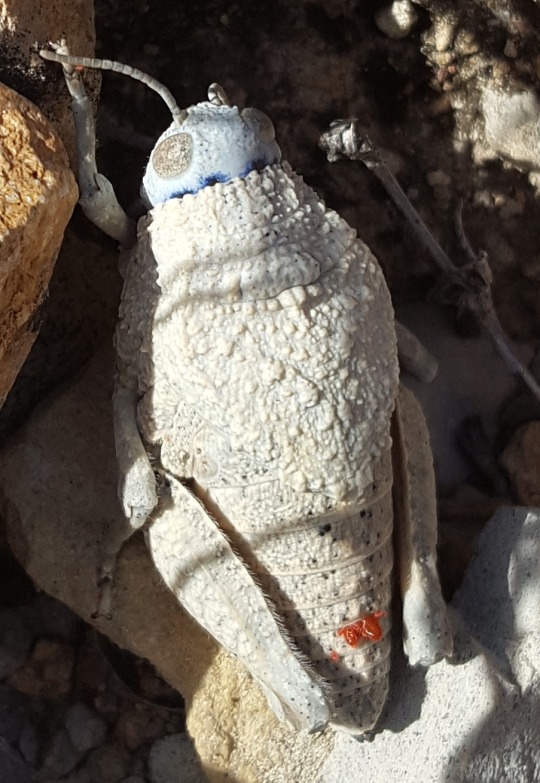
Robust Toad Lubber (Phrynotettix robustus).
#grasshopper#grasshoppers#lubber grasshopper#lubber grasshoppers#robust toad lubber#robust toad lubbers#phrynotettix#phrynotettix robustus#insect#insects#animal#animals#nature#inaturalist
4 notes
·
View notes
Text
Florida Lubber - Listen to him munching
PneumaNomads.com
0 notes
Text


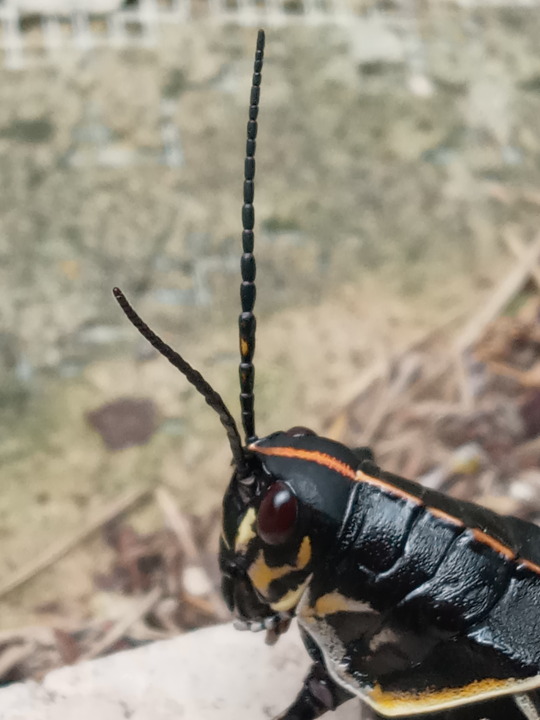





[PHOTOS TAKEN: JULY 7TH, 2023 | Image IDs: Eight photos of a large black, yellow, red, and orange lubber grasshopper on a grey and dirty green tile and sheet rock surface /End IDs.]
#lubber grasshopper#romaleidae#grasshoppers#grasshopper#orthoptera#insects#insect#bugs#bug#bugblr#entomology#arthropods#reblog#invertebrates#inverts#photos#photo#Wasp House Sights
49 notes
·
View notes
Photo
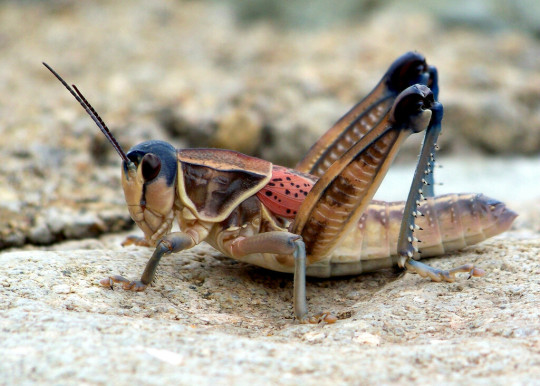






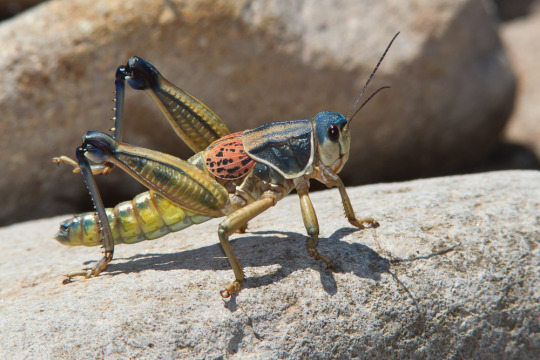
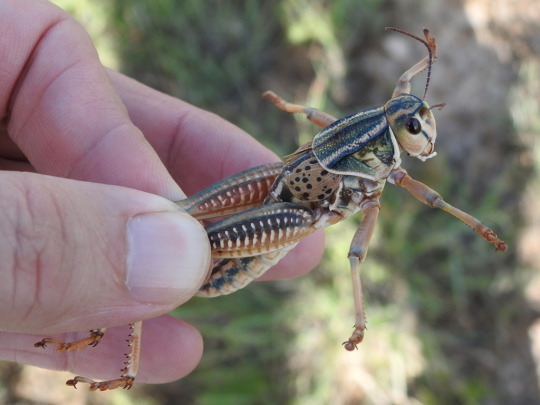

Plains lubber grasshopper, Brachystola magna, Romaleidae
Found in the central US and down into Mexico
Photos 1-2 by philly96, 3 by wild-about-texas, 4 by pufferchung, 5 by mlodinow, 6 by benjamin189, 7 by fvaldesp_tutor, 8 by greglasley, 9 by sambiology, and 10 by khoskins
#animals#curators on tumblr#insects#bugs#grasshopper#lubber grasshopper#plains lubber grasshopper#one nice bug#they are so large and pretty#i could easily kiss one and they wouldn't even mind i bet
701 notes
·
View notes
Text
These fucking idiots (affectionate)
#bugblr#grasshoppers#bugs#insects#entymology#eastern lubber grasshopper#hey look im finally using this blog!
2K notes
·
View notes
Text

Reticulate Lubber Grasshoppers (Taeniopoda reticulata), mating, family Romaleidae, Playa Chiquita, Limon, Costa Rica
photograph by Patrick Freivald
#grasshopper#lubber grasshopper#taeniopoda#romaleidae#insect#entomology#animals#nature#central america#orthoptera
41 notes
·
View notes
Text
Uncharismatic Fact of the Day
Not all grasshoppers hop! Although they have both wings and the large hind feet characteristic of the group Caelifera, Eastern lubber grasshoppers prefers to walk from one place to another-- hence the name 'lubber', from the old English 'lobre' which means lazy.

(Image: An eastern lubber grasshopper (Romalea microptera) by the Big Cypress National Preserve)
If you like what I do, consider leaving a tip or buying me a kofi!
#eastern lubber grasshopper#Orthoptera#Romaleidae#lubber grasshoppers#grasshoppers#insects#arthropods#uncharismatic facts
79 notes
·
View notes
Text

day 12 eastern lubber grasshopper. lubbaboy
#invertober#bug#eastern lubber grasshopper#grasshopper#insect#got distracted earlier and went like an hour over midnight whoops!
477 notes
·
View notes